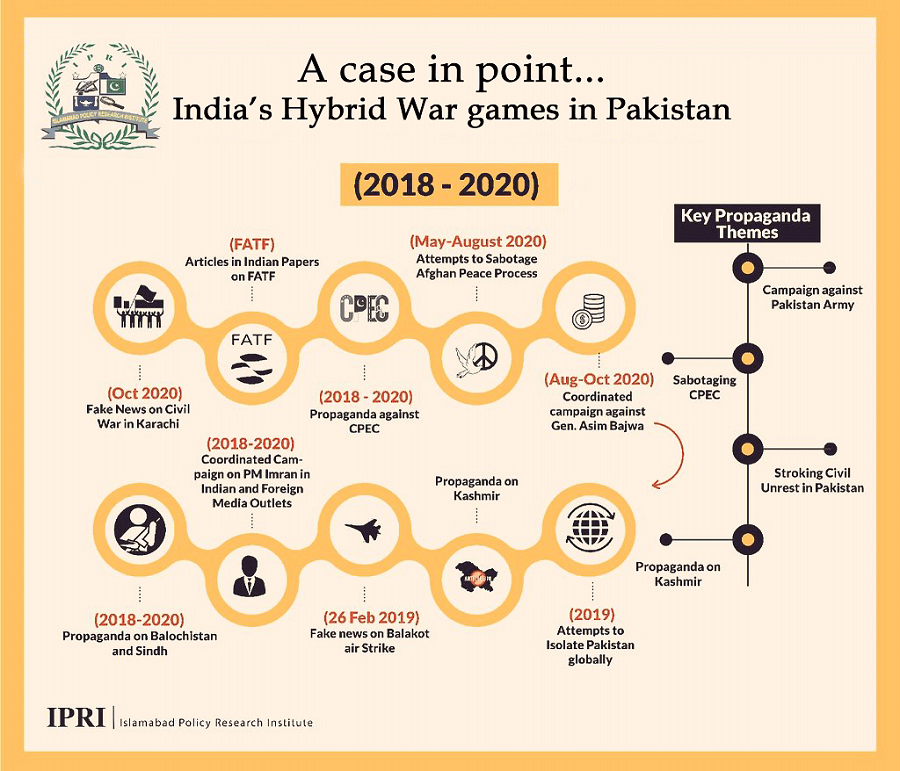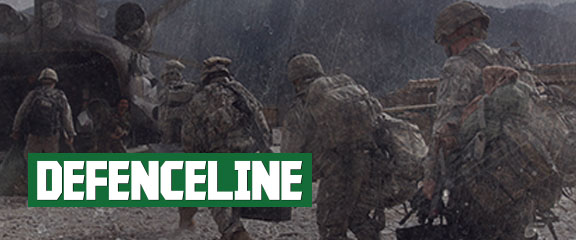The nature and character of ‘Hybrid War’ waged against a country need to be thoroughly understood before it can fight back. Wars are actually strategies directed to break or dilute the will of opposing entities, unlike the limited definition of war dictionaries still offer — i.e. ‘armed conflict.’ Sun Tzu in ancient times recognised the impact of the mere threat of defeat on the minds of opposing forces when he said that the “acme of strategy is to win a battle without fighting.”
We talk a lot about the “nature and character of war.” Aristotle cautioned us about “defining the terms” before embarking on any discussion on the subject, so war scholars agreed to keep the nature of war fixed, even as the character of war was variable. But these are semantics, terms coined to help ease the understanding of conflict. We have even divided the character of war generationally, i.e. according to the evolution in weaponry, resulting in transformations in tactics, operations and strategies. Starting from ‘First Generation’ warfare, we now discuss ‘Fifth Generation’ warfare. The details of generational definitions aside, in my view the most flexible and all-encompassing new term is ‘Hybrid War.’ This entails the use of the entire spectrum of the science and art of warfare, along with the application of all the modern resources available to mankind. This concept of war comprehensively includes all known kinetic and non-kinetic means to prevail over opposing forces.
And so, starting from conventional operations, Low Intensity Conflict (LIC), the employment of proxies, surgical strikes, drone attacks, psychological operations, media (mainstream and social media) operations, information operations, false flag operations, economic undermining, political and diplomatic pressures … the list of strategies is long and increasing with the passage of time. The phenomenon of employing psychological and economic pressure, along with kinetic methods, is as old as mankind itself. However, modern wherewithal and knowledge have equipped man with such a variety of tools to impact on material and non-material (cognitive) areas, that war has acquired an entirely new avatar — that of Hybrid War.
To master the strategy of Hybrid Warfare, it is not enough to understand the ‘ways’ and ‘means’ available, but also the location of the objective that ultimately is the ‘end’ we wish to attain. Ultimately, the final target is the ‘will’ and the ‘resistive mindset’ of the opponent.
A well-orchestrated onslaught is needed to be unleashed against the minds and willpower of adversaries, impacting on their world views, self-views, relationships with other entities, attitudes, faith, bonding forces, cultural pride etc.
Clearly then, Hybrid Warfare straddles a larger presence in the cognitive space than in the merely physical domain.

However, before we think of evolving a strategy to counter any Hybrid Threat, we need to ask ourselves a few questions:
a. Are we really facing a Hybrid threat or is it just an exaggerated perception of the reality on the ground?
b. Who is likely to be attacking, and for what purpose?
c. What means are being employed to wage this war?
d. Who or what are the targets?
If the ‘will’ of a group of a people, a nation or a country is to be the actual target, then it is of utmost importance to know where such an important target is located.
The question arises, how, in a large mass of people and an elaborate maze of systems and institutions, does one pinpoint this resistive will? Does it lie in a concentrated form or is it well distributed across a large space? Is it a physical or a metaphysical entity, related to bodies, hearts or minds? In my humble opinion, this all-important ‘will’ of a people is the centre of gravity of any nation; it is dependent on the political, economic and social structure of that society. In a good democratic set-up, it is likely to be well distributed across the polity, depending on how power and responsibilities are distributed within that dispensation. In an autocratic environment, the probability is high that it will be embedded in certain personalities. In tribal societies it may lie in their strong traditions, that would be extremely difficult to defeat. Because of their newly found energy and formative minds, the youth are particularly vulnerable to such onslaughts. Thus this ‘will to resist’ any external pressure is a complex phenomenon and needs to be studied in detail for its level of robustness and its locations, so that the defensive mechanisms and offensive pressures are applied against the right spots.
The imperceptible impact of this specialised warfare on our society, in my opinion, is now profound and effective, and we are struggling to repair some divisive trends, and trying to ascertain strands of Hybrid War that are being applied by shattering forces. But our efforts are not yet harmonised and integrated.
Economic disparities, the neglected vast lands of Balochistan, Sindh and Gilgit -Baltistan, and the failure to control religious and sectarian hatred, are all our own doings. Add to it the general levels of illiteracy, poverty and injustice, and the task of enemies is made much easier. They just need to apply further pressure on all the existing fissures and cause further pain to our society, polity and faith.
Many people across Pakistan must have at one time or another heard openly and commonly used negative narratives like: religion has proved divisive rather than being a bonding factor; we would have been better off in undivided India; our forces have waged war against our own people (Bangladesh, Balochistan); it is a conspiracy theory that some powers are targeting Muslim countries, etc.
There is a need to check the intensity and effects of these narratives that many in our country believe, which resultantly weaken us. A quintessential component of Hybrid War is to find already existing weaknesses, to use the media (mainstream and social) to aggravate such perceptions, to employ paid operatives and inadvertent agents to lead such thinking groups, carry out physical false flag operations to increase stand-offs between various groups, employ economic and political hit-men to aggravate the existing disparities, create a civil strife situation aimed to culminate in civil war, ensure total destruction by fuelling one or both sides to perpetuate the conflict, and finally, to gain control by either making a side win, or give all-out support to the winning side.
To assess whether we, the Pakistani nation, are a victim of Hybrid War or not, and if so, to gauge its impact, we should consider the following:
a. The intensity of political rivalry.
b. Mistrust created regarding all important institutions.
c. The sinking of colossal resources into erroneous priorities.
d. The intensified sense of deprivation of areas that have been kept backward.
e. The maligning of the CPEC.
f. Keeping security forces under intense pressure from outside and inside.
g. Aggravating Shia-Sunni, Punjabi-non Punjabi, civil-military tensions through propaganda.
h. Spoiling relations with all neighbouring countries employing information operations’ and ‘false flag operations.’
We have long been speculating whether the issues plaguing our country are home-grown, urgently requiring us to put our house in order, or is the ongoing morass we find ourselves in the handiwork of our enemies? The truth lies between the two. It is an amalgam of both, a grey zone, thus hybrid in nature.
Understanding the phenomenon is not enough, it has to be fought back in all aspects.
To begin with, some important decisions have to be taken: Do we want to absorb this pain passively by taking only precautionary and defensive measures, or do we wish to fight back actively and aggressively? And we need to realistically assess what elements of power we possess vis a vis the opponent, and whether we have the mechanisms to fight back hybrid threats.
Passivity and defensive actions can only be effective to cover or remove vulnerabilities, such as educating the public, specially the youth about enemy intentions and their methods, removing social discrepancies to reduce reactionary attitudes that could get exploited, and controlling fake news and negative propaganda with finesse, guarding against blowbacks.
If we are really serious about fighting back the Hybrid threat, then the first step would be an acceptance, especially by the Armed Forces, that the planning and execution of any counter plan would have to be hybrid in nature, and only a small portion of the campaign would fall in the purview of kinetics. It would require a transformation in the idea of warfare, and thus a total change in the organisation, equipment and training of the group that would undertake these operations. Also needed would be the support of non-kinetic forms like politics, diplomacy, lawfare, media wars, psy operations, and economic undermining, and the multiplying of small kinetic ops, false flag actions, surgical strikes, etc. to create disproportionate and at time strategic effects. Also all grand plans must be kept below perceptive thresholds, so that the target’s reactions are mortally delayed due to continuous guessing if they are actually under attack.
We ask ourselves who would recognise and respond to hybrid threats being posed against Pakistan. The only solace might be found in assuming that the ISI, being a versatile organisation, must be doing it. But this could be false optimism, as the special techniques, knowledge and expertise required for both, defensive and aggressive actions, along with the coordination with assorted ministries, is a tough call.
An elaborate organisation under the National Security Advisor or the Ministry of Defence may perform as Headquarters (HQ) to deal with Hybrid War. But in my opinion there is already an existing framework that is lightly loaded and materially well-provisioned to undertake the task. It is proposed that the Joint services HQ be directly placed under the Prime Minister, armed with the civil and specialised resources needed to defend against and fight Hybrid threats. The Chairman Joint Chiefs of Staff Committee should be made directly responsible to plan, organise and execute this specialised warfare.
While the fine details can be discussed at other forums and at a later date, the presence of a specialised hybrid threat, the absence of any appropriate mechanism to deal with it, and the urgent requirement of a response should be immediately debated at the National Security Council and other strategic forums, so that there is no delay in dealing with such an important national issue that could make or break us.




